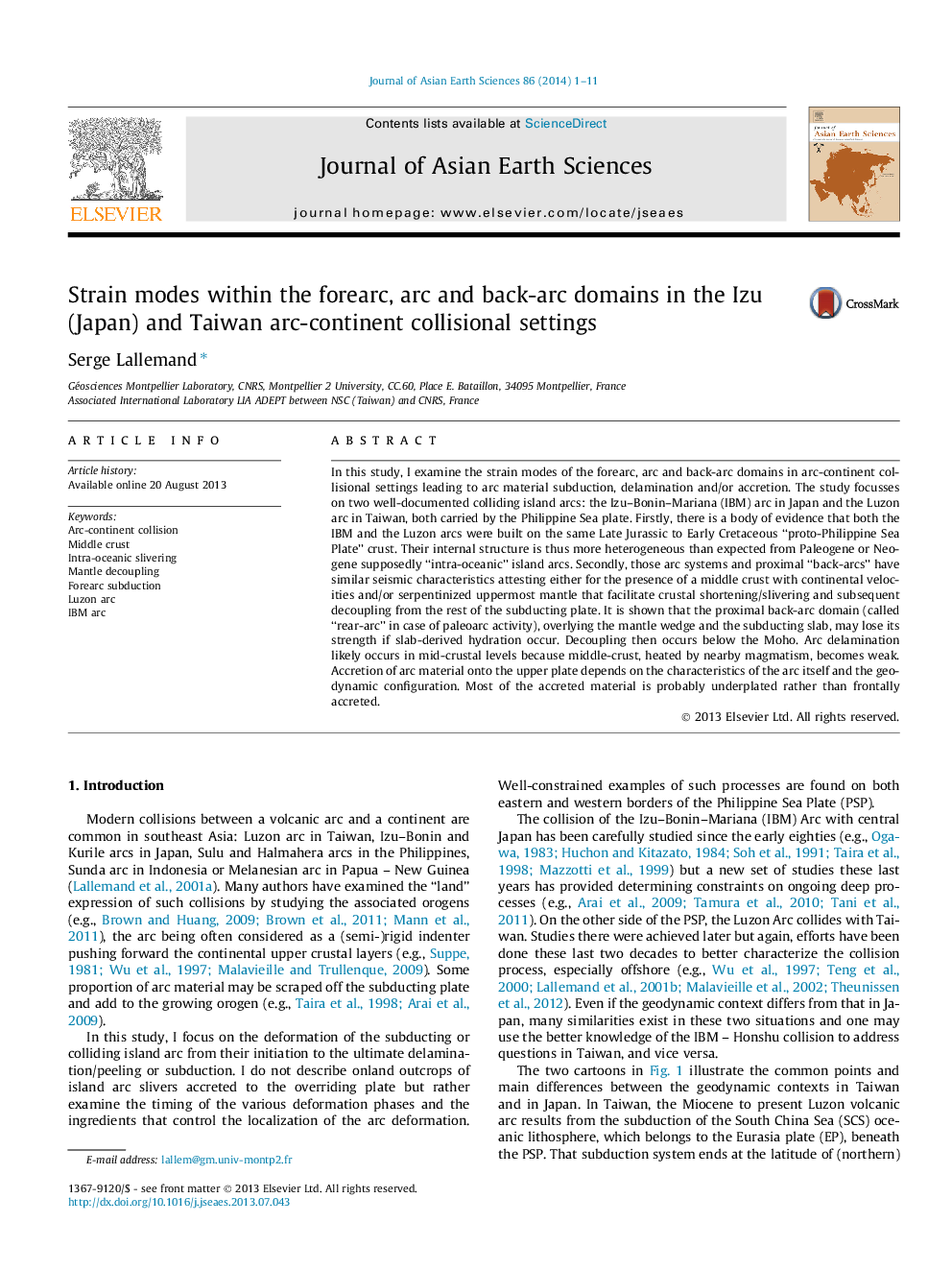| کد مقاله | کد نشریه | سال انتشار | مقاله انگلیسی | نسخه تمام متن |
|---|---|---|---|---|
| 4730686 | 1640382 | 2014 | 11 صفحه PDF | دانلود رایگان |
• We examine the strain modes of arc systems in arc-continent collisional settings.
• We compare the structure of the Izu–Bonin–Mariana and Luzon island arcs.
• Decoupling within an arc indenter preferentially occurs at mid-crustal level.
• Decoupling within the proximal back-arc domain preferentially occurs below the Moho.
• Hydration from hydrothermalism and subducting slab dewatering favors shear localization in uppermost mantle.
In this study, I examine the strain modes of the forearc, arc and back-arc domains in arc-continent collisional settings leading to arc material subduction, delamination and/or accretion. The study focusses on two well-documented colliding island arcs: the Izu–Bonin–Mariana (IBM) arc in Japan and the Luzon arc in Taiwan, both carried by the Philippine Sea plate. Firstly, there is a body of evidence that both the IBM and the Luzon arcs were built on the same Late Jurassic to Early Cretaceous “proto-Philippine Sea Plate” crust. Their internal structure is thus more heterogeneous than expected from Paleogene or Neogene supposedly “intra-oceanic” island arcs. Secondly, those arc systems and proximal “back-arcs” have similar seismic characteristics attesting either for the presence of a middle crust with continental velocities and/or serpentinized uppermost mantle that facilitate crustal shortening/slivering and subsequent decoupling from the rest of the subducting plate. It is shown that the proximal back-arc domain (called “rear-arc” in case of paleoarc activity), overlying the mantle wedge and the subducting slab, may lose its strength if slab-derived hydration occur. Decoupling then occurs below the Moho. Arc delamination likely occurs in mid-crustal levels because middle-crust, heated by nearby magmatism, becomes weak. Accretion of arc material onto the upper plate depends on the characteristics of the arc itself and the geodynamic configuration. Most of the accreted material is probably underplated rather than frontally accreted.
Journal: Journal of Asian Earth Sciences - Volume 86, 1 June 2014, Pages 1–11
